Our master program “Physical Geography: Environmental History” offers the students the opportunity to do an internship in different research institutions in Germany or in other countries. I took the opportunity and did an internship in the tephrochronology group at the University of Oxford. My internship was funded by the Erasmus+ program of the European Union.
Description of the institution:
The University of Oxford is the oldest university in the English-speaking world. Although there is no exact date of foundation, there is evidence for teaching activities since 1096 (University of Oxford, 2018a). Today, University of Oxford has more than 23000 students (University of Oxford, 2018b).
The university is organized into 38 colleges with Balliol-, Merton- and University College being the oldest ones, established between 1249 and 1264. These colleges can almost be seen as an independent university within the University of Oxford, because they are self-governing and financial independent. They are responsible for the selection and admission of undergraduate students and provide accommodation for them. Graduate students apply directly to university but are selected by colleges after admission. Besides accommodation, the colleges provide facilities for catering and social and spiritual needs. Every college has a dining hall where breakfast, lunch and dinner are offered. Additionally, pretty much every college has its own library and chapel and its own sports classes. Most famous in Oxford are the rowing competitions between the colleges and against the University of Cambridge, of course. Finally, colleges are part of academic life by offering tutorials for students as well as scientific talks to the public (University of Oxford, 2018c).
I did my internship in the Research Laboratory for Archaeology and the History of Art (RLAHA), a department of the School of Archaeology of the University of Oxford. The RLAHA was established in 1955 and combines Archaeology with a number of scientific methods from other disciplines like for instance geosciences (RLAHA, 2018). In this sense, the approach of the RLAHA may be similar to the NiHK in Wilhelmshaven. In Oxford, the facilities include laboratories for tephrochronology, radiocarbon, stable isotopes, luminescence dating and ancient DNA. Furthermore, a dendrochronology lab is also associated with the school.
Documentation of the internship with tasks and activities:
I worked for two months in the Tephrochronology Group. The head of the group is Dr. Victoria Smith. Tephra are fine volcanic ash particles, ejected by volcanic eruptions. The geochemical fingerprint of the volcanic ash makes it possible to correlate the tephra to a distinct eruption of a particular volcano. This gives information about magnitude and frequency of eruptions from a certain volcano as well as about the distribution area of the ash cloud. In combination with dating methods (e. g. 14C dating, 40Ar/39Ar dating, varve chronology), tephra layers are important as stratigraphic marker layers for the correlation and age modeling of sedimentary sequences (Lane et al., 2014). If two sedimentary records contain the same tephra layer and the age of the eruption is known, both records can be directly correlated with each other which is important for many paleoenvironmental questions. For instance, if certain environmental changes in both records took place at the same time or if both events are shifted or of different magnitude. During my internship, I learnt a number of different techniques of tephra extraction and analysis to identify visible and non-visible (cryptotephra) tephra layers and to link them to specific volcanic eruptions.
Roughly, the first half of the internship, I was working on sediment cores from Lake Suigetsu (Japan). This lake is very well studied and the cores are very well dated by tephra deposits, varves and >600 radiocarbon measurements. This makes Lake Suigetsu a key archive for paleoclimatological and paleoenvironmental studies in East Asia (Nakagawa et al., 2012; Smith et al., 2013). Extracting and analyzing cryptotephra from this lake is the PhD project of Danielle McLean who kindly introduced me to the lab procedures (McLean et al., 2018):
On samples from Lake Suigetsu, I learned the cryptotephra extraction following the heavy liquid floatation method of (Blockley et al., 2005). The entire core is sampled in continuous 5 cm intervals which is the low-resolution sampling. The sample are dried and weighted and organics are removed using H2O2 and carbonates using HCl. Later, the dried samples are sieved through an 80 μm and a 25 μm mesh and tephra is extracted with a centrifuge by density separation using sodium polytungstate (SPT). Then, the extracted material is mounted on slides and tephra shards are counted under the microscope as shards per gram dry weight (s/g). The aim of those low-resolution samples is simply to identify some tephra. If that’s the case, the respective 5 cm interval will be sampled again in 1 cm intervals to identify the peak position of the cryptotephra layer which may be important for the age modeling later. The lab procedures for the high-resolution samples are exactly the same.
When a peak is identified, a third sample is taken from this position for the geochemical analysis to link the tephra to a certain volcanic eruption. The geochemical fingerprint is the only way to correlate the tephra to a certain volcano. Under the microscope it’s only possible to make a first estimation (Shape of the shards? Micro-structures like vesicles or crystals within the shards? More basaltic or rhyolitic tephra?). For the geochemical analysis, the sample is again extracted using SPT (see above) but not mounted on a slide. Instead, the tephra shards are hand-picked using a microscope and a micromanipulator with a gas-chromatography syringe (Lane et al., 2014). Then, the shards are mounted into Epoxy resin stubs. To expose the shards to a flat surface, the stubs need to be grinded by hand using a series of grinding papers from 600-4000 grit. Afterwards, the stubs are polished. Before the analysis on the electron microprobe, the stubs are cleaned and carbon-coated to get good results from the microprobe (McLean et al., 2018).
Every tephra sample, cryptotephra as well as visible tephra, are analyzed geochemically with an JEOL-8600 electron microprobe. Single tephra shards are hit by an electron beam and the shards respond by emitting x-rays at certain wavelengths. The response is element-specific and can be used to determine the geochemical fingerprint of the tephra.
The analysis of visible tephra layers was the second major part of my internship. For this second part of my internship, I worked with Dr. Paul Albert on the TRACERS project (TephRo-chronology and mArker events for the CorrElation of natural archives in the Ross Sea, Antarctica). These samples are from a marine core from the Ross Sea (Antarctica) which is located closely to several Antarctic volcanos. The aim of this to get information about past volcanic activity in Antarctica like the age, frequency and intensity of eruptions. Especially the potential of tephra as a marker layer in stratigraphy is important in this region, as the use of radiocarbon dating is limited due to the lack organic material. Therefore, this work will be important to date and synchronize climatic events and related questions (TRACERS, 2018).
Visible tephra or other volcanic deposits such as pumice, are much easier to analyze, because you literally see the sample. In contrast, you are not able to see any cryptotephra during the whole extraction process until you count the tephra shards under the microscope. With visible tephra, you don’t have to sample entire core sections, hoping to find some tephra. Because of that, the whole extraction procedure with the SPT is not necessary. Instead, the bigger parts of the pumice were crushed by mortar and pestle and later dried in oven. Once the sample is dry, it can be filled into some stubs. The fine fractions were filled into multi-stubs, coarser grains are handpicked.
Besides the lab work, I had the chance to attend lectures of the master-program or the seminar series of the institute. I attended the “Chronology” course regularly, where I had for example lectures on Ar/Ar dating and tephrochronology. Furthermore, I attended a student practical in dendrochronology, dating wood samples from an old building in Oxfords city centre. Occasionally, I also attended the “Bioarcheology” course and learnt for instance about the principles of ancient DNA. Additionally, there were several seminar series held at the institute on a weekly basis at 12 pm. In each series, results of recent research projects were presented either by members of the RLAHA itself or by scientists from other universities. Tuesdays, there was the “Climate & Chronology” seminar which was probably the closest to my master program, presenting recent studies of paleoclimatic reconstructions from a range of proxies like tephra, ancient DNA or pollen. Volcano lunch on Wednesday was hosted by the Earth Sciences department, were in-house volcanologists and tephrochronologists present their ongoing research projects and discuss first results. I really enjoyed to learn more about the investigations of different volcanic regions (e. g. the volcanism along the East African Rift System). But some presentations discussed very specific questions related to processes within the magma chamber of a volcano (e. g. non-equilibrium degassing of ascending basalt), were I was a little bit lost. Finally, there was the RLAHA seminar series on Thursdays, dealing with a more broader range of topics, mostly combining archaeological with geological evidences. To conclude, I really appreciate to had the opportunity, to attend so many different lectures and seminars, because I got in insight into a wide range of different research projects in every part of the world and various new methods, I didn’t know much about before.
Reflection and future development
I really enjoyed my internship in Oxford. For me, it was the first time being abroad for two months. But overall, I had no problems to adapt myself to the life in Great Britain (besides the left-hand driving of course!) either in University or everyday life. The English language was not a big issue, especially listening and understanding was not really a problem. Of course, speaking was a bit more difficult, because you can’t remember certain words or the grammar isn’t perfect. But I never had bigger troubles in conversations to express what I wanted to say. Funnily, my English is always better during a conversation where I just talk naturally and don’t think too much about grammar. Instead, if I have plenty of time to think about a sentence, I want to say, it’s getting worse for most of the time. Probably because as a German guy, I still “think in German”, even after several weeks in the UK. In the end, my English can become very “German” sometimes, because I translate my thoughts word for word.
Regarding the lab work, I felt quite familiar and confident after a short time. Danielle, Victoria and Paul did a great job in introducing me to the procedures of tephra extraction and analysis and I really learnt a lot. The knowledge and skills, I gained from the student’s lab courses and from my student job at our lab in Bremen were definitely useful for me in this case. For instance, I already knew how to sample a core or to remove unwanted components from the sediments (e. g. carbonates). But this also includes very basic things like how to use a microscope or a centrifuge and to work very careful so that I won’t contaminate any samples. Especially with cryptotephra, you have to be very sure that you work absolutely clean and careful. As you are not able to see the cryptotephra you won’t realize your contamination until you see the finished slides under the microscope. For this reason, the cryptotephra lab is separated from the other lab where visible samples are crushed and sieved. And if you crushed samples or the like in that lab, you shouldn’t go into the cryptotephra lab later on, as you possibly would contaminate something. In conclusion, I was able to adapt quite a bit of my knowledge from my master studies in Oxford and to work on my own quite fast, after I learnt about the specific tephra techniques. As I will have the chance to do my master thesis on tephra, this will be really helpful. One other thing I noticed is, that occasionally, I have to be a little more patient, because sometimes I want to do to many different things at once.
Talking about future work on tephra, I will have the chance to go back to Oxford for my master thesis and do some tephra analysis. In this way, the internship was really useful not only by getting into contact with the RLAHA but also, because I already got the knowledge. As I already know how tephra is extracted, I should be quite confident with that. But I have only done a little bit of tephra counting and haven’t done any interpretation of the geochemical analyses. So, the correlation of identified tephra with a certain volcanic eruption will be the big challenge in my thesis. Therefore, I need more basic knowledge about volcanism and the characteristics of different volcanic regions of the world. Being a geography student, I only had introductory lectures on geomorphology which included volcanos and plate tectonics but this isn’t enough in this case. That’s why I attend the volcanology lectures of the geosciences bachelor program during this semester. This will enhance my knowledge on the mechanisms of volcanic eruptions and key characteristics of different regions with volcanic activity.
I really enjoyed working at the RLAHA. Everyone was very kind to me and I had the chance, to get into contact with many different researchers of various disciplines, working with different techniques or in different parts of the world. Especially during lunch and coffee break where everybody met in the common room, there were always nice talks. This, and the regular lectures and seminars were really helpful for broaden my horizon and getting insights into other fields of research. Besides this, getting to know people, making contacts with other scientists and building up a network is very important for students.
- JEOL-8600 electron microprobe at the RLAHA
- Sieving samples from Lake Suigetsu
- Mounting slides, containing cryptotephra using Canada Balsam
- Grinding a stub from the TRACERS project. The handpicked samples can be seen quite easily by eye

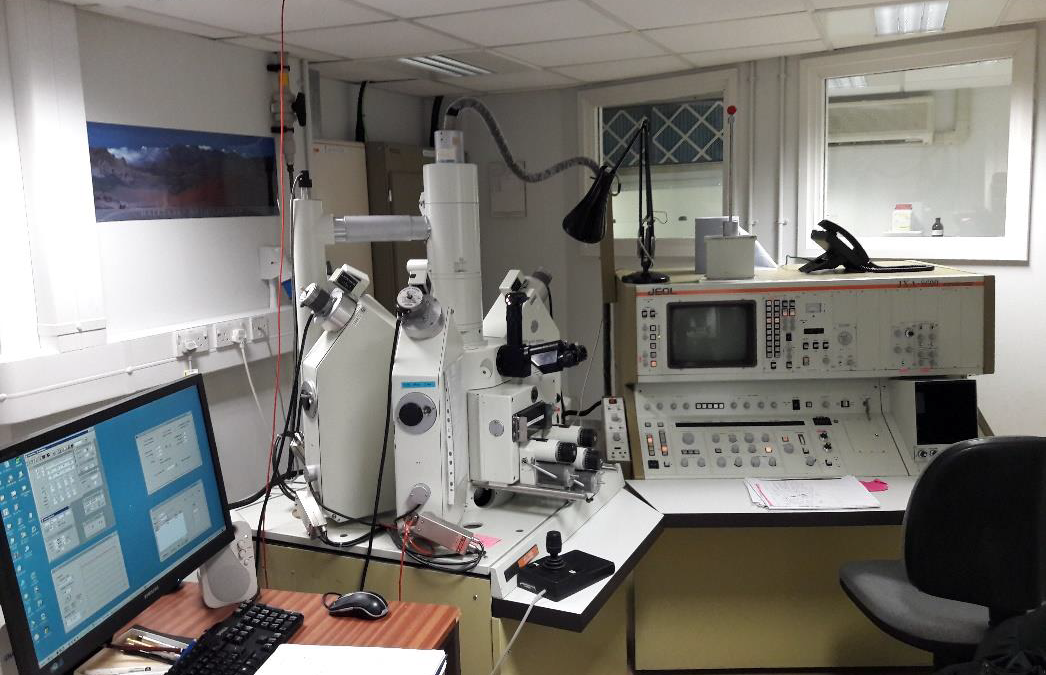
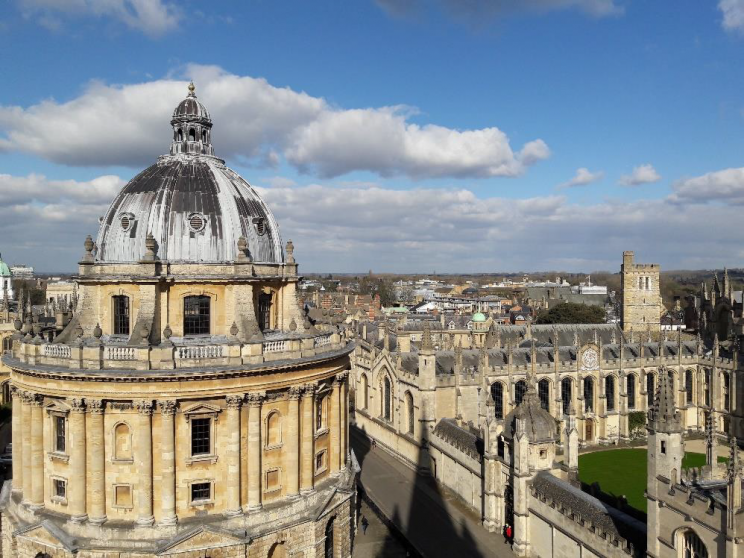
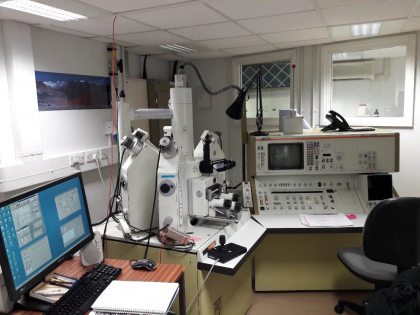
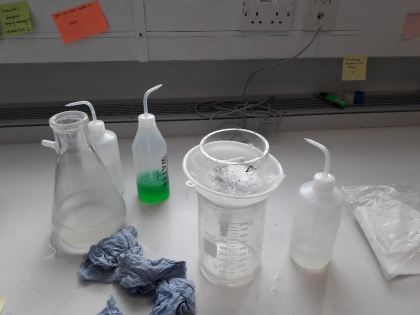
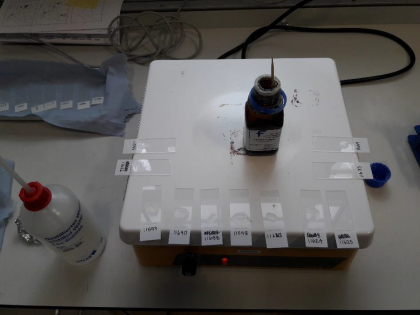
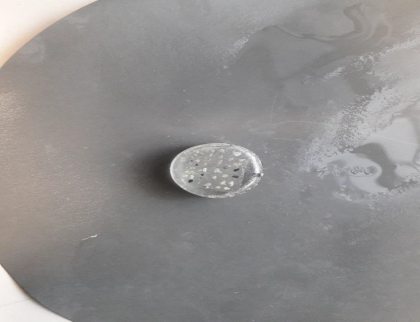
Neueste Kommentare